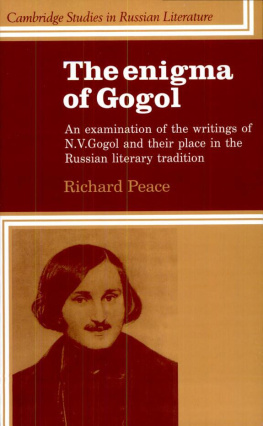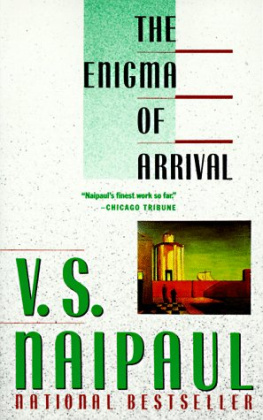The Kukotsky Enigma
The Kukotsky Enigma
A Novel

Ludmila Ulitskaya
T RANSLATED FROM THE R USSIAN BY D IANE N EMEC I GNASHEV
Northwestern University Press

Evanston, Illinois
Northwestern University Press
www.nupress.northwestern.edu
English translation copyright 2016 by Diane Nemec Ignashev. Published 2016 by Northwestern University Press. Originally published in Russian as The Kukotsky Case ( ), copyright 2001 by Ludmila Ulitskaya. Published by arrangement with ELKOST International Literary Agency. All rights reserved.
Library of Congress Cataloging-in-Publication Data
Names: Ulitskaia, Liudmila, author. | Nemec Ignashev, Diane, 1951 translator.
Title: The Kukotsky enigma : a novel / Ludmila Ulitskaya ; translated from the Russian by Diane Nemec Ignashev.
Other titles: Kazus Kukotskogo. English
Description: Evanston, Illinois : Northwestern University Press, 2016.
Identifiers: LCCN 2016007590| ISBN 9780810133488 (pbk. : alk. paper) | ISBN 9780810133495 (e-book)
Subjects: LCSH: GynecologistsSoviet UnionFiction. | AbortionGovernment policySoviet UnionFiction. | FamiliesSoviet UnionFiction.
Classification: LCC PG3489.2.L58 K3913 2016 | DDC 891.735dc23
LC record available at http://lccn.loc.gov/2016007590
A note to the reader: This e-book has been produced to offer maximum consistency across all supported e-readers. However, e-reading technologies vary, and text display can also change dramatically depending on user choices. Therefore, you occasionally may encounter small discrepancies from the print edition, especially with respect to indents, fonts, symbols, and line breaks. Furthermore, some features of the print edition, such as photographs, may be missing due to permissions restrictions.
Truth is on the side of death.
Simone Weil
Contents

S INCE THE END OF THE SEVENTEENTH CENTURY ALL OF Pavel Alekseevich Kukotskys male ancestors on his fathers side had been physicians. The name of the first of them, Avdei Fedorovich, appears in a letter written in 1698 by Peter the Great to the city of Utrecht to a certain Professor Ruysch whose lectures on anatomy the Russian emperor had attended incognito as Piotr Mikhailov the year before. In his letter the young emperor requests that the professor take on as his student the son of an apothecarys assistant, Avdei Kukotsky. How the surname Kukotsky originated cannot be established with certainty, but according to family legend, the ancestral Avdei had come from the area in Moscow known as Kukui where Peter I had built the German Quarter.
Since that time the Kukotsky surname has appeared repeatedly in decrees of state honors; it also can be found in the enrollment records of schools established in Russia following the Decree of 1714. By entering government service upon graduation from these new schools, the low-born gained entry to the nobility. After the Table of Ranks was introduced, the Kukotskys meritorious service earned them membership in the superior senior nobility with all privileges and advantages. A Kukotsky figures among the students of Dr. Johann Erasmus of Strasbourg, the first Western doctor in Russia to teach, among other medical disciplines, the midwyfs art.
Since childhood, Pavel had held a secret fascination for the order of all things living. Sometimesusually in the uncertain, unclaimed moments that occurred just before dinnerhe managed to slip undetected into his fathers study, where, breathless with anticipation, he pulled from the middle shelf of the barrister bookcases with their heavy glass drop-fronts three treasured volumes of the Platen Handbook of Hygienic Rules of Life (the most well-known medical reference book at the time) and settled on the floor with them in a cozy corner between the tiled stove and the bookcase. The supplements to the volumes included cardboard paper-doll figures of a rosy-cheeked man with black whiskers and a comely but quite pregnant woman with a flap-like womb that opened up to reveal a fetus. Likely, it was precisely because of this figure, which for most peopleno denying itwas just a naked lady, that little Pavel kept his studies secret from his family for fear of being caught doing something wrong.
Just as little girls tirelessly dress their dolls, so Pavel spent hours assembling and disassembling the cardboard models of the humans and their various organs. Flap by flap the cardboard people shed their outer layer of skin, then their healthy rosy muscles, to reveal a removable liver, lungs that dangled from the pliant trunk of the trachea, and, finally, the bared skeleton, tinted dark yellow and seemingly completely lifeless. It was as if death were always lurking inside the human body, hidden from view by living flesh: Pavel would have cause to ponder this much later.
One day, Pavels father, Aleksei Gavrilovich, found his son there, between the stove and the bookcase. The boy expected to get his ears boxed, but his father, looking down from his great height, merely harrumphed and promised to bring his son something better.
A few days later his father really did give him something betterLeonardo da Vincis Dell Anatomia, Folio A, eighteen sheets with two hundred forty-five drawings, published by Sabashnikov in Turin at the end of the nineteenth century. The volumeone of only three hundred hand-numbered copieswas more splendid than anything Pavel had seen before. Inside was an inscription by the publisher: Aleksei Gavrilovich had performed an operation on some member of the Sabashnikov household...
Placing the book in the hands of his ten-year-old son, Kukotsky senior advised: Look here... Leonardo was the premier anatomist of his time. No one drew anatomical specimens better than he did.
Kukotsky senior said something else, but Pavel no longer heard him. The book had opened up before him as if with a bright light that flooded his vision. The perfection of each drawing was magnified by the inconceivable perfection of the object depicted, be it an arm, a leg, or the pisciform tibialis anterior muscle, which Leonardo referred to lovingly as the fish.
Down here youll find books on natural history, zoology, and comparative anatomy. Aleksei Gavrilovich directed his sons attention to the shelves below. You can come here and read.
P AVEL SPENT THE HAPPIEST HOURS OF HIS CHILDHOOD and adolescence in his fathers study delighting at the incredible articulation of bones in the multisequential processes of pronation and supination, and thrilled almost to tears by the chart illustrating the evolution of the circulatory systemfrom the earthworms simple vessel with its thin threads of muscle fiber to the triple-beat miracle of the four-chambered human heart, by comparison with which a perpetual motion machine was remedial arithmetic. Indeed, for the boy the world itself seemed like one enormous perpetual motion machine that ran on its own resources, charged by the pulsating movement of living to dead, and dead to living.
After little Pavels father gave him a small brass microscope with fifty-power magnification, anything that could not be mounted on a glass slide ceased to be of interest. In the world beyond the field of his microscope he noticed only that which corresponded to the amazing pictures observable under his lens. For example, the pattern on the tablecloth caught his eye for its resemblance to the structure of skeletal muscle...













